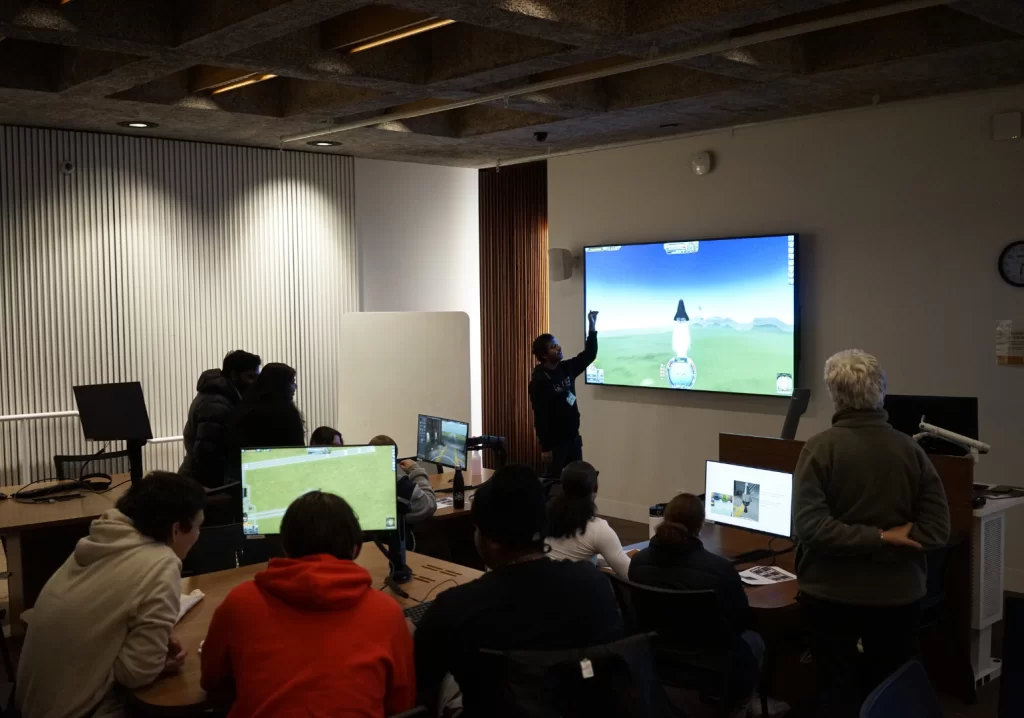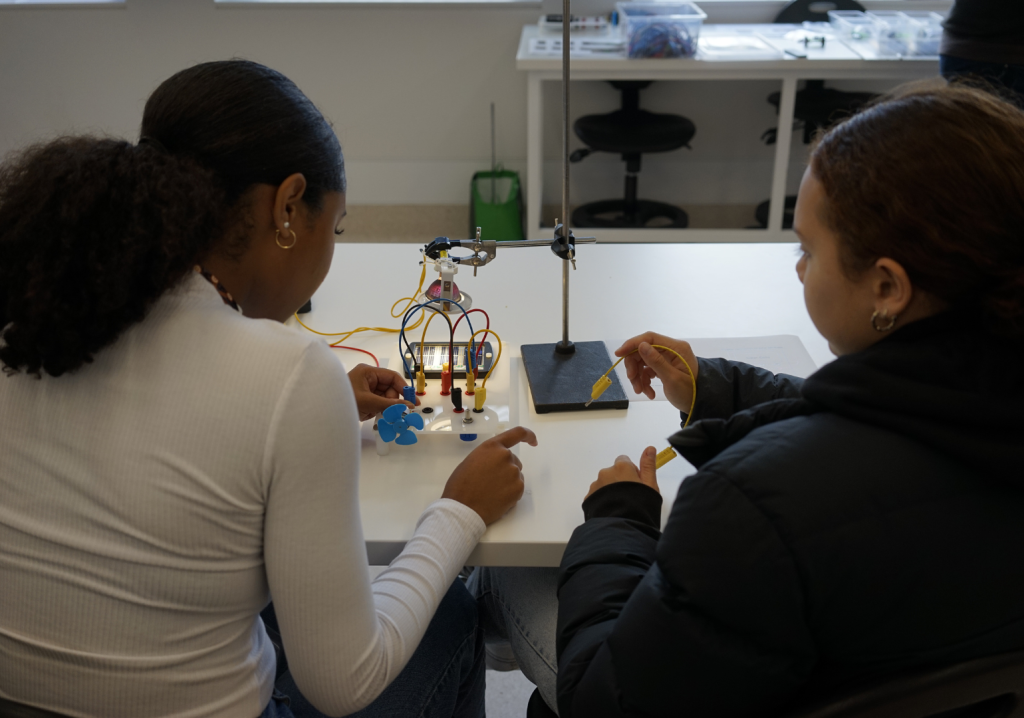Indigenous Australians have unique perspectives on the environment that are vital to solving sustainability challenges. These university programs are dedicated to valuing this knowledge and developing a cohort of passionate Indigenous engineers.
Indigenous Australians make up 2.5 per cent of the population, but only 0.5 per cent of engineering students.
Initiatives such as the National Indigenous Summer School and the National Indigenous Engineering Autumn School, both run by the Australian National University (ANU), are key to boosting Indigenous participation rates.
The week-long programs, catered to Aboriginal and Torres Strait Islander students in year 10 and 11, are designed to simulate the university experience both socially and educationally, to support students in their career aspirations and goals.
And with Australia experiencing an ongoing need for qualified engineers, along with myriad sustainability and climate challenges, the benefits are twofold.
Combining Indigenous knowledge with engineering principles
The summer and autumn schools provide an opportunity for students to travel to ANU, on Ngunawal and Ngambri land, and develop an insight into the experience of studying engineering, and the career options engineering provides, according to engineering program coordinator Nyssa Miller.
“Participants are encouraged to think about what they might want to do and how to get there,” she told create.
While the summer school offers a cross-campus program, the autumn offering is run entirely for engineering students, and was designed via learnings from ANU’s Bandalang Studio, an Indigenous-designed and -led Engineering Design Studio.
Indigenous technologists and engineers are invited to deliver opening sessions, which take a deep dive into the ways the community will benefit from Indigenous knowledge systems and perspectives influencing Western engineering.
“There’s a strong focus on the community benefits for all of us – both Indigenous and non-Indigenous – in listening and learning from Indigenous culture and knowledge systems,” Miller, who is not Indigenous, said.
The grounding of Indigenous knowledge into these programs aims to give students the understanding that there is a place at university for them, along with their knowledge and perspectives in engineering – whether at ANU or another institution.
“We emphasise that this program is not a recruitment activity for students to come to ANU,” Miller said.
Instead, the idea is for students to gain insights into university life, which for some might entail uprooting their life and moving to a new city.
“Students might prefer to attend a university close to home, and we’re very encouraging of that,” she added.
These schools also foster social connections. “We are seeing a cohort of Indigenous students forming from one course to the other – which we imagine is really beneficial for students, if they end up studying at university together,” Miller said.

Amelia Bishop, who will be attending the Summer School this year, is looking forward to the opportunity to explore her passion for medicine, and learn more about how she can contribute to the health and wellbeing of Indigenous communities.
“I’m particularly interested in learning how education and a personal vision can shape a future where it can make a meaningful difference in remote areas within Australia,” she told create. “I [also] hope to gain a clearer understanding of the career paths available in science, technology, engineering, mathematics and medicine.”
Course curricula
The courses start with a foundational introduction to Indigenous perspectives on engineering, with disciplines including renewable energy, the hydrogen economy, robotics, mechatronics, information and signal processing, aerospace and autonomous systems.
“We run a tour of the Photovoltaics Lab, where students learn about the technology behind solar modules and solar energy,” Miller said. “We also have a decarbonising energy class, where students learn about the way we use energy as a society and how carbon-free technologies are so important for sustainable ways of living.”
Offering a combination of practical and theoretical work is key to the program. “We try to ensure a lot of our sessions are hands-on. The classes involve learning technical skills such as soldering in the solar energy session, or building water filtration systems.
A session on building community resilience provides insight into the strengths of systems engineering design practices, which underpins the program at the School of Engineering at ANU. Students learn how this transdisciplinary approach to solving complex problems can provide a foundation for sustainable design principles, and how this can be used to meet the challenges of climate change, such as flooding and bushfires.
“We also have a partnership with Engineers Without Borders, which runs a fantastic workshop with students about water quality and hygiene,” Miller said. “Students are given materials such as sand rocks and dirty water, and are asked to create water filtration systems, while also being asked to consider the diverse experiences of water access, the availability of resources, and the socio-political context of their design.”
Learning from Indigenous astronomy
One of the highlights of attending the summer and autumn schools is the stargazing trip run by Peter Swanton, who is undertaking a PhD in Indigenous astronomy at ANU after completing a bachelor degree in astrophysics.
The stargazing trip provides another opportunity to bring Aboriginal and Torres Strait Islander perspectives of science and technology by harnessing Indigenous knowledge of the sky and its connection to Country, knowledge that has been developed over at least 60,000 years.
“The most powerful offering of our program is that students get to meet Indigenous academics doing really interesting work in universities, and for Aboriginal and Torres Strait Islander practitioners to share their experiences of being an Indigenous engineer,” Miller said.
The stargazing tour begins at Mount Stromlo, which used to be a functioning observatory, said Peter’s sister Stacy Swanton, who is completing an Indigenous cadetship at Bandalang Studio.
“There’s a tour of the facilities, including a meteorite, [run by] our old vice chancellor, who has a Nobel Prize,” she said.
Mount Stromlo’s thermal vacuum chamber, Wombat XL simulates the airlessness of space, and is used to test satellites before they are sent out to space.
“The chamber is anti-gravity as well as pressurised – almost like a space prototype,” Swanton said.
The students also have a chance to look through the telescopes. “The last time I was up there, we got to see Saturn and about four of its moons,” she added.
Fostering the next generation of engineers
Up until recently, ANU had fairly low enrollment of Aboriginal and Torres Strait Islander students in its School of Engineering.
But since commencing the autumn and summer school programs, there has been a significant boost in enrollments.
Miller said there is much to gain from diverse perspectives.
“In my opinion, the discipline of Western engineering can have an enormous and often harmful impact on our environment. Having more Indigenous people in the profession, who offer perspectives informed by over 60,000 years of living and caring for this land in all its complexity, is what we all need to engineer more sustainably and respectfully.”
